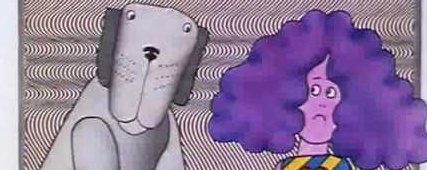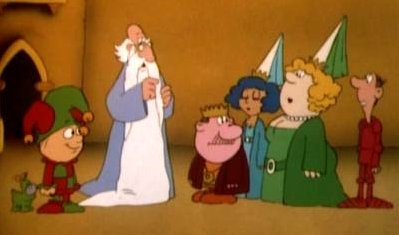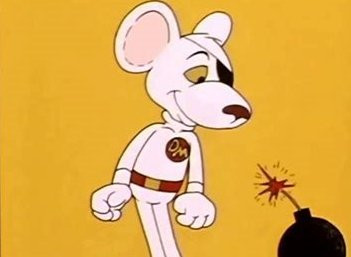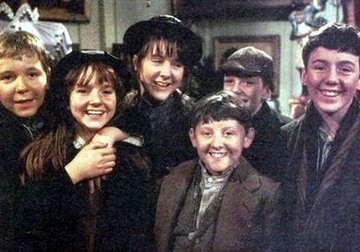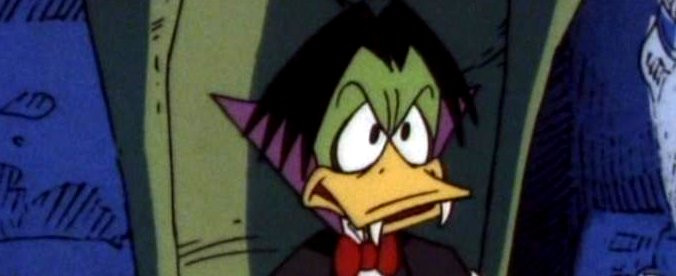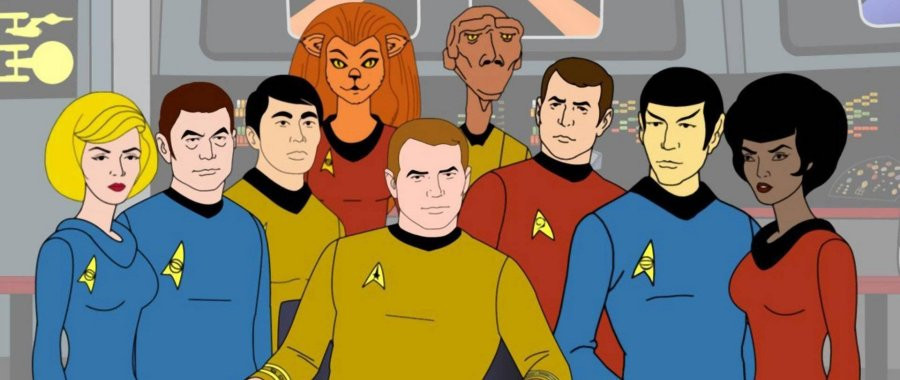
Star Trek: The Animated Series
1973 - United StatesReview: Daniel Tessier
Most television viewers are familiar with the original Star Trek series first broadcast in the 1960s. Almost as many will recall it was followed by Star Trek: The Next Generationaround twenty years later. Far fewer will be aware that the first follow-up was, in fact, not a live action spin-off, but a short-lived animated continuation of the Original Series.
Originally titled simply Star Trek like its parent series and also marketed as The Animated Adventures of Gene Roddenberry's “Star Trek,” it is today referred to as Star Trek: The Animated Series. Following Star Trek's success in syndication, NBC and Paramount realised that they had let go a huge hit. Approaching series creator Gene Roddenberry in the early 1970s, NBC executives hoped that Star Trek might be revitalised in some form. Unfortunately, by the time talks had begun, Paramount had dismantled the standing sets for the series, with many of the assets refurbished for other series, destroyed, or even stolen. Expensive to film even when it was running, remounting Star Trek was cost-prohibitive. As such, NBC opted to finance a new animated follow-up for their network.
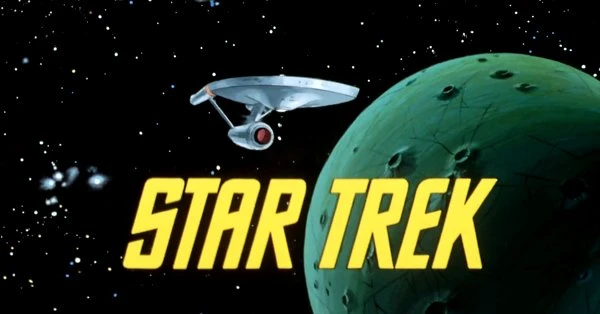
It was produced by the well-established animation studio Filmation, which had been responsible for popular cartoon series such as the 1960s Adventures of Superboy and The New Adventures of Superman, Fantastic Voyage and the double-billed Sabrina the Teenage Witch and Groovie Goolies, and would become best known in the 1980s for He-Man and the Masters of the Universe and its spin-off She-Ra: Princess of Power. Filmation's productions were aimed at children, and typically meant for Saturday morning filler, unchallenging and often repetitive.
As such, it might seem a poor match for Star Trek. However, while certainly a more kid-friendly, simplified version of the series, the animated Star Trek was, for the most part, very true to its parent show. Roddenberry returned as executive producer, while Dorothy “D.C.” Fontana, one of the most significant scriptwriters on the Original Series, became associate producer, recruiting writers and making major script decisions. Fontana brought back writers from the Original Series, such as David Gerrold, writer of the fan favourite “The Trouble With Troubles,” who would continue his association with Star Trek as story editor on early Star Trek: The Next Generation. Gerrold later said in interviews that the constraints of the format, working to a twenty-two minute runtime instead of the fifty minutes of the live action format, was challenging for him and many others who had experience on the Original Series. Like the Original Series, noted science fiction writers were invited to pitch scripts; notably, Larry Niven of Ringworld fame adapted one of his own short stories as the episode “The Slaver Weapon,” introducing his creations, the Kzinti, to the Star Trek galaxy.
Early concepts for the series were very child-oriented, including a Starfleet Academy series with younger versions of the original characters. This is a concept that would resurface several times in Star Trek's history, finally seeing light in the J.J. Abrams-directed reboot film in 2009. Another concept had teenage equivalents of the main crew working alongside them on the ship. In the end, Roddenberry stuck to his guns and insisted on a direct continuation of the Original Series, with the two seasons of the animation acting as a fourth year of the legendary Five Year Mission.
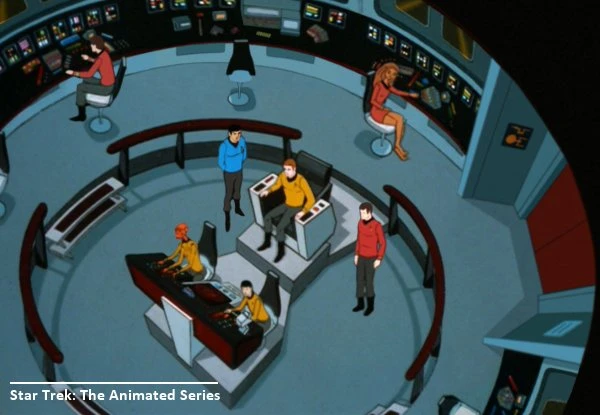
The entire main cast of the original Star Trek returned for the animation, with the exception of Walter Koenig as Chekov, who was excluded on grounds of cost (clearly being considered the most disposable of the main cast, although he did return to write the episode “The Infinite Vulcan”). Initially neither George Takei nor Nichelle Nichols were to be contracted, with the idea that James Doohan (Scotty) and Majel Barrett (Christine Chapel) would provide the voices for Sulu and Uhura respectively. Leonard Nimoy objected to this, and his importance to the success of the series as Spock meant he had the necessary clout to insist on Nichols and Takei being hired. He argued, convincingly, that the diversity they represented was important for Star Trek, even more so as a children's programme.
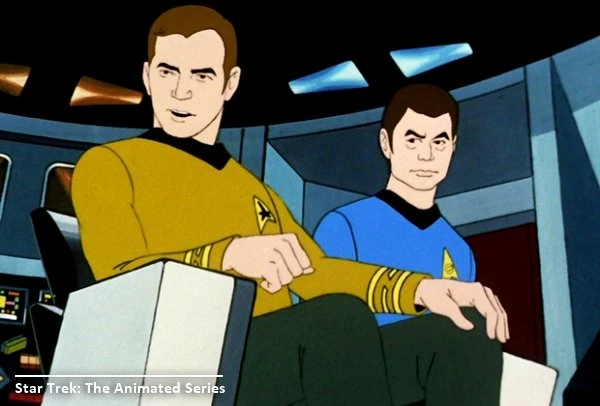
It was rare for the entire cast to record together. The very first recording session took place in early June 1973, with the full cast together, headed by William Shatner as Captain Kirk, DeForest Kelley as Dr. McCoy, and Nimoy as Spock. The session at Filmation's California studios ended with the completed readings of the first three scripts for the series: “Beyond the Farthest Star,” “Yesteryear” and “More Tribbles, More Troubles.” In future, the actors would record most of the material alone or in smaller groups, a common and more practical method for audio-only recording. While Takei and Nichols had indeed returned, Doohan and Barrett would still perform almost all male and female secondary voices respectively, with the other cast and crew members making occasional contributions to lesser characters. Doohan, in particular, lent his vocal talents to dozens of characters, skilfully disguising his voice. Two new crew members were also created for the series: the cat-like female alien M'Ress, and Chekov's replacement at the helm, the three-legged, three-armed Mr. Arex. They were voiced, of course, by Barrett and Doohan.
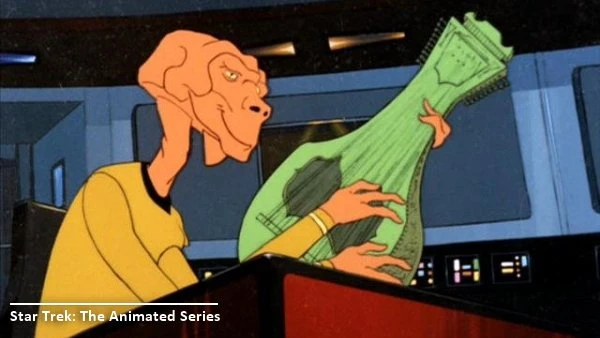
While the cost-saving measure of multiple roles for the main actors gave the soundtracks a rather samey feel, there was enough money for the occasional guest actor. While a number of guest characters from the Original Series returned, only three were voiced by their original actors: Mark Lenard returned as Spock's father, Sarek; Roger C. Carmel as the criminal Harry Mudd; and Stanley Adams as tribble-purveyor Cyrano Jones. Jane Webb occasionally subbed for Barrett, who was pregnant with Roddenberry's son, while William Simpson voiced the young Spock in “Yesteryear.” Bigger names included 2001: A Space Odyssey’s Ed Bishop and Ted Knight, popular on The Mary Tyler Moore Show.
In spite of the reduced running time and the simplified story-telling for younger viewers, the Animated Series remained true to the spirit of Star Trek. The twenty-two episodes are bite-sized slices of Star Trek, and while some are flimsy, throw-away things (“The Practical Joker” being perhaps the most kiddy episode), others are genuinely strong little slices of science fiction. “The Survivor” and “Albatross” would not be out of place as full length Star Trek adventures, given some expansion and more mature dialogue. Some episodes were originally conceived for the Original Series, such as “Bem,” in which the eponymous alien is a composite creature that can spilt into many parts – something untenable in live action, yet easily achieved in animation.
This is, of course, the great benefit of animation as a medium – there's no limit to what can be portrayed. It's just as easy to give the Enterprise new alien crewmen as it is a human one; just as feasible to create a wild alien vista as an English countryside. The Original Series featured more peculiar aliens than it is sometimes given credit for, but it was still restricted by the need to use real actors and practical effects. The animated universe could be populated by a variety of strange creatures in all manner of shapes and sizes. On the other hand, Filmation did not have a Walt Disney-sized budget, and the many cost-saving measures used by the animators are readily apparent. Characters' eyes are rarely picked out white, instead blending eerily into their flesh; characters frequently put their hands in front of their mouths when speaking to save on animating their lips. Recycled footage and designs are common. While none of this was unusual for Saturday morning cartoons of the time, they do make the series look rather cheap and tacky when viewed today.
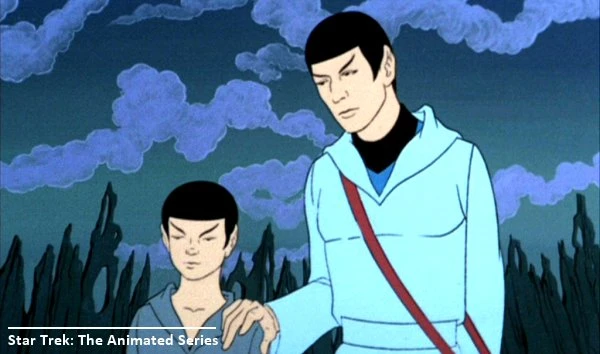
Another peculiarity to the animation is the colour scheme. While the design of the Enterprise and Starfleet's uniforms was set in stone by the live action series, everything was fair game. There's an unusual amount of green, grey and particularly pink in the series' palette, with pink tribbles, pink Klingon uniforms and pink spaceships throughout. There's a long-standing myth that both director Hal Sutherland and colourist Irv Kaplan were both colour-blind It would be very unfortunate if two people involved in a television production's look were so afflicted. In reality, Kaplan wasn't colour-blind at all – he simply really liked greens and pinks. However, Sutherland was indeed colour-blind, and so couldn't see the strange colour combinations when he gave approval to the designs.
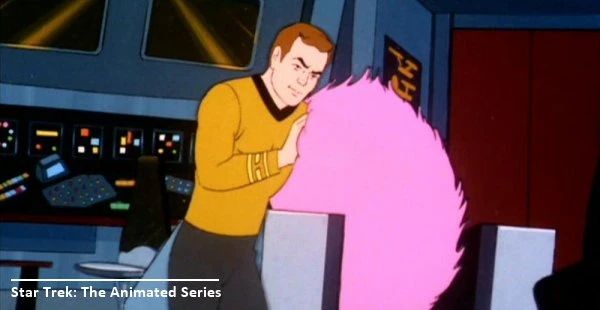
The music to the series is both melodramatic and generic. Norm Prescott – producer to the series and top of the Filmation tree – and jazz artist Ray Ellis worked together to compose the music to the series, under the pseudonyms Jeff Michael and Yvette Blais respectively. Star Trek's famous title theme was not available for use, and so the pair composed a stirring new theme that, while exciting, sounded like it could have belonged to any 1970s adventure series. On the other hand, Ellis's connections as a music publisher meant he had access to a wider symphonic orchestra than most animated programmes, adding to the quality.
The series' clear cheapness and the simplicity of its stories gave it a poor reputation among Star Trekfans. It was long claimed that Roddenberry decided it was not part of the Star Trek canon, although this may have started as a rumour. For many years, Paramount more-or-less ignored the series, focusing on its live action series. References to the Animated Series were rare in the live action spin-offs for a long time. However, there were occasional nods. The second episode of the series, “Yesteryear,” is perhaps easily the best regarded, and deals with Spock's childhood on Vulcan. References to the details of Vulcan and Spock's life turn up in Star Trek: Enterprise, while Kor, a Klingon commander who appears on Deep Space Nine, tells stories about his exploits on both the Original Series and the animation. Over time, the attitude to the Animated Series has taken a turn for the better, with the series now available on DVD, Blu-Ray, and the Star Trek back catalogue. Fans are happier now to include the series in their personal canon and to sit down and enjoy its charms. Brief links to animated episodes have snuck into the recent Star Trek series Discovery and Picard. While many details of the Animated Series contradicts later Star Trek, the same is true of the Original Series. Indeed, a number of important elements now taken for granted originated in the Animated Series. For example, it was here that we learned the first captain of the Enterprise was Robert April, and that James Kirk's middle name was Tiberius.
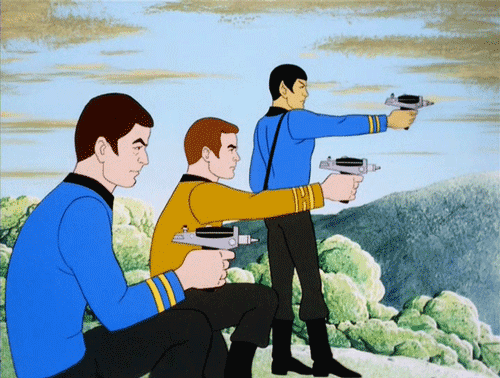
There's really not good reason to not include Star Trek: The Animated Series in the great future universe, nor to ignore its short, sweet adventures. Where else could you see the Enterprise crew put in an alien zoo by giant slugs? Or watch Kirk threatened by a giant clone of Spock? Or see Kirk meet the Devil, and find out he's not such a bad guy after all? What a mad, wonderful universe this is.
Daniel Tessier
Dan describes himself as a geek. Skinny white guy. Older than he looks. Younger than he feels. Reads, watches, plays and writes. Has been compared to the third, fourth, fifth, sixth, seventh, eighth, tenth, eleventh and twelfth Doctors, and the Dream Lord. Plus Dr. Smith from 'Lost in Space.' He has also had a short story published in Master Pieces: Misadventures in Space and Time a charity anthology about the renegade Time Lord.
Dan's web page can be here: Immaterial
Seen this show? How do you rate it?
Seen this show? How do you rate it?
Published on July 13th, 2020. Written by Daniel Tessier for Television Heaven.



